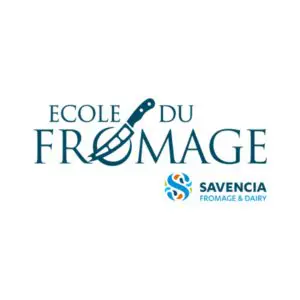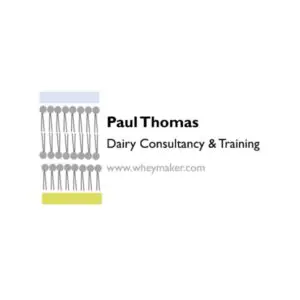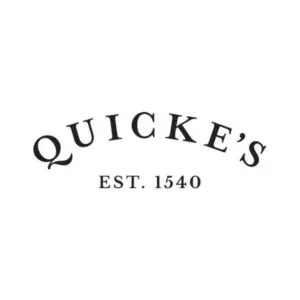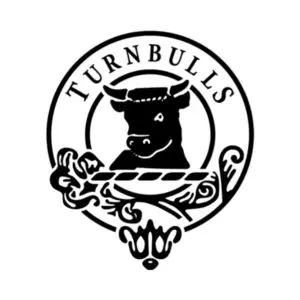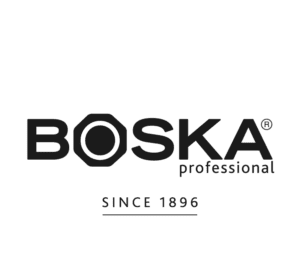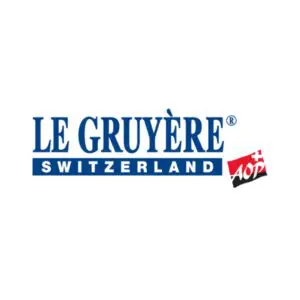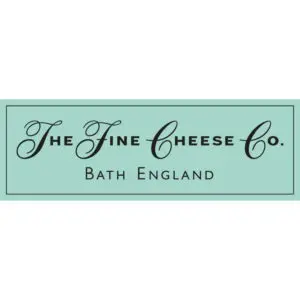Charlie Speaks with Denis Halle about Normandy cheese- specifically the PDO cheeses Camembert, Livarot and Coeur de Neufchatel.
Streamed live on Mar 30, 2021
GUIDE TO TASTING CHEESE
Learn about the four stages of tasting cheese and how to take tasting notes with this definitive guide to tasting cheese.
Tours Des Fromages de France Video transcript
Tonight with me Charlie Turnbull and Dennis Howe. Good afternoon Dennis, let’s get that beautiful picture of Normandy out the way so that we can see your wonderful face. Welcome to Tuesday night is cheese night, welcome to the academy of cheese. So you’ve joined us, so that we can learn about Normandy.
Yeah, the wonderful Noemi, who is our normal uh speaker on the tour de France de France uh has seeded her seat to someone who she says has much superior knowledge to her so um we hope you have uh going to be a wonderful guide tonight i hope so i hope so um so um let us let us start with the easy questions what are the famous cheeses of Normandy come on it’s the uh that one should be a back of the net ah i would i would say number one is the common bear of Normandy uh number two liver home number three uh pon live and one of my favorite favorite cheese it’s the the heart of the chatel we could initiate yes yeah i will tell you a story about that later on okay okay well let’s start with um uh where is Normandy you know i mean let’s be honest it’s our closest neighbor just about yeah we are just uh on the other side of the channel so the coast of Normandy faces up into sort of sussex and southern hampshire and and that kind of area it is literally just over the way between uh is it nord pada calais and Brittany further around is that right ah patch is just north of France and we are more on the west side of France it’s Brittany and Normandy and uh i’m living in uh in monche marsh depart french department and uh the the the shape of this department is called cottontown presque isle of cottontown and it’s facing uh england it’s facing so you’re sort of looking at me so if i wave out my window yeah if if i uh go up on the table maybe i can see you yeah i’m i’m just i’m just next to brighton so uh i think you really are just oh yeah yeah breakdown is not that far yeah so kind of there’s another country but it’s what 30 miles no problem right um but so so tell us about Normandy because as we were chatting before this in many ways it’s similar to the south of england yeah it’s it’s quite similar to the south of england but we we are very lucky here in cottontown uh as you can see on the pictures uh we have several several different sceneries in in kotterton we have um uh it’s we are surrounded by the by the sea by the uh the channel and uh so we have uh harbors we have beaches and uh and in the middle we have uh all the fields to to feed the cow and um we have uh also a a very uh specific scenery called the swamps and sometimes when the when when it rains a lot it can form a an island almost an island it’s uh it’s very strange but uh you can you can yeah you can drive maybe uh 50 kilometers and you can see a very different sceneries and but it’s it’s it’s lush isn’t it we’re talking about really good grassland a lot of mixed pasture um not so flat if i’m right about that it’s not so flat yeah you are right um and uh and as you were quick to point out monster michelle is in Normandy it is not in britain because we have we have some michael’s mount which is our sort of sister which is over in in cornwall which looks much the same if we talk you were talking about the grass if we talk about the the weather we have um around uh 160 days of rain per year so it makes the grass very green and very uh very fat i would say and and um we have a lot of um maybe meadows yeah yeah surrounded by uh by uh trees and it’s a it’s a very uh specific um area here it’s it just begs for dairy doesn’t it that’s what it’s saying oh yeah yeah it’s it’s made to to to raise cows to to have milk and to make cheese yeah so that’s so but it’s the interesting thing about it is that it is completely famous for smaller cow’s milk cheeses so it likes cows which we see across as as you head north into europe down in the south mediterranean that sort of sheep and goats yeah more north you get you might get more cow’s milk by the time you get to Normandy which is sort of upper middle France it’s all cows and your your pastures there just just reach for them basically yeah goat and uh it’s more south of France yeah you’re right and and and the Normandy cattle is a particular particular breed describe them for us yeah it’s um um i would say it’s uh it’s a very nice cow um because um one of the one of the key points if we can see a picture of a cow they have a stain around their eyes they can have different colors uh different shape of stains on their body but around their eyes they have always stain right there we’re beginning to get into our cows here we go so we would say in the uk that they have spectacles spectacles okay like glasses um yeah glasses yeah and uh uh they are very uh very nice to um um i would say um to milk to work with as dairy animals yes yes they are known for their fertility longevity uh ease of calving and docility okay really a nice cow very and and i’m right in saying that they are slightly smaller than your average cow um yeah a little bit smaller they they they don’t give as much milk as the the holstein of course but the the milk is more rich in term of uh of a protein level and fat level and of course the the cream of Normandy is very is very good due to that yes it is all your all your dairy products coming out of Normandy are of you know they’re world class so so we can see them so those spectacles are really obvious oh my thing’s moved on my spectacles are really obvious there so that is the defining feature but they are broadly brown and white to a greater regulator extension down there that is um that is mostly white one is mostly brown yeah so some of them are more brown uh you can see on the background that there is one which is quite white but they they always have a glasses on their eyes and you you do get more black versions rather than brown don’t you yeah yeah that’s that’s the bad part of uh uh of that and and that makes the difference between um uh the common bear uh of Normandy and camembert made in Normandy uh for the commander of Normandy it’s a pdo it’s uh it’s a protected designation of origin yeah and it was created in uh 1983 if i remember okay and of course i said not that long ago yeah yeah and it’s uh it gives strict specifications for example the the milk must come only from Normandy and be raw to to to make camembert of Normandy so not unheat and unheated and not pasteurized and the the herd of each milk producer must contain uh at least 50 percent of norman breed cows okay that one of the specifications and the the cows they must be fed uh they must they must feed them at least for six months in the in the pastures okay the other specification and the rest of the time uh at least 80 percent of the of the food should come from the farm where they are raised okay so they need to be fed from the farm you can’t be importing yeah yeah and usually uh the the producer they have all the food they want yeah okay now i visited Normandy um uh i don’t know 10 15 years ago i can’t remember looking through and there was only one producer still making in in camembert itself the town of camembert um but there is what are there six or seven um aop producers now yeah yeah yeah it’s around that yeah i visited one uh it’s in uh in a small uh small town called lesser and it’s the name of the producer is reo and uh of course they are still making a camembert of Normandy made with raw milk and they use a ladle and it’s very nice to see they have a cheese factory tour where you can see the the people working it’s very interesting it is it is it’s um and there is still quite a wide variety of size of producers in there because there there was at one point the camembert was when the larger producers wanted to stop um the requirement for manual ladling is that right uh yeah yeah but the the it’s one specification which is very important because um when you make a common bear of Normandy you have it takes maybe three and a half hour to uh to put the curd into the forms and you uh you you take a a ladder and you you you you pour gently uh a first layer of curd into the form and 50 minutes later you put the second one and 50 minutes later the third one and the fourth one and the fifth one and you don’t want to break the curd in small pieces in small chunks otherwise you change the draining process and one the one specification about uh common bear of Normandy it’s not to break in small chunks the curd so the draining process is very slow and it’s the the main reason why you have these specific flavors at the end because it’s very slow draining very slow draining and that is sort of so crucial to the character of the cheese that to move away from that what’s the point don’t call it camembert if you do that kind of thing yeah we uh at the plant where i’m where where i’m working now we are making uh i would say industrial uh camembert and columbia and the the making process for camembert of Normandy uh i said uh yeah three hours and 30 minutes for us it’s maybe one hour and ten minutes okay so you can really shorten the process by moving away from the strict rules of the camera yes yeah so so let’s let’s eat some um i mean the cameraman normally one of the rules is its size i mean this is this is the rustique which is not an aoc um i have to say i like this cheese i find it very um very flexible it’s quite robust you get decent flavor even if you treat it quite badly if you sort of i mean um so so we’ve got 250 odd grams what’s the sort of um uh sort of assuming it’s a half pound basically isn’t it yeah and um so it’s even if it’s an industrial camembert type of cheese it’s quite close to a common bear of Normandy because in our process we we select a good microorganism to to try to to match the the flavor of a real uh camembert of Normandy made with raw milk yeah um and the camera guide to roman dormant to Normandy does it have to have to be have raw it does have to raw milk and it can’t even be um thermized it has to be no heating at all isn’t it yeah you you just warm it up a little bit uh to uh when you when you add the rennet but but that’s it you it’s not pasteurized not um yeah it’s no heat treatment so let’s get it some let’s get the the mold out the way because this is this is really interesting to me so in the uk we talk about penicillium candidum um whereas you guys caught talk about penicillium camemberty what what’s the difference there’s a real nerds question this it’s a tricky question because um there is maybe a very slim differences between camemberty and uh and candidom maybe a little bit of difference in term of color in term of a thickness but um we use uh we use penicillium to uh to generate the the rinder and to get the enzyme which are going to to break down the protein and the butter fat but i would say there is more differences between penicillium and geotrichum and on the on the camembert logistic you can see uh a combination of both penicillium candidum and and uh geotricum come on camera you can focus on here you can do this for me so you can see though there we go so you can see those um i always make me think of sort of a topography when i look at geotrichum it looks like it’s the it’s it’s it’s the lands and hills of a land and not that kind of funny enough on the bottom side it’s much more um uh pure candida more pure camemberty there yeah right quite flat so that’s quite actually interesting to see that the combination of the molds is different on the same cheeser and if we look at this uh curtain of chateau we’re getting a much more dominant um geotrichum there yes of course you are right but the the geotrichum is is a very interesting mould because it can be uh due to the temperature and the humidity it can be very close to a yeast or it can be very close to a penicillium to a to a much more white and um and uh um blooming type of uh of mold i think people now think of it as a yeast to donate i think there was some argument and now people have sort of confirmed it to yeast or is it still sort of got a foot in both camps um i would say uh east are very important of course to have the right the white rind you have to use penicillium or geotrichum but to have a good growth for the penicillium you must have yeast on the surface of the cheese and they have two uh two main roles the first one it’s uh uh the yeast are going to um um to to start the de-acidification of the of the rhino raise the ph to raise up the ph you’re right and uh and uh after uh it’s uh they are full of enzymes and that that’s part of the rich flavor of the cheese and and and of course when you have the de-acidification of the of the rhine the pedicelium can grow faster so it’s very important to have a to have this type of uh yeast microorganism i would say yeah yeah i mean one of the one of the things that we notice in in in british equivalence of camembert is that uh they we tend to have more sort of the monoculture of just the camemberty rhines um which some people ascribe to having a more a slightly more bitter flavor in the cheese is is that right yeah yeah you know the um the ripening process is very important my my teacher at the dairy school was saying yeah when when you pour the curd into the forms 80 percent of the cheese is made i would say that the 20 last percent are very very important and that’s the ripening process and after the way you you you keep the cheese uh the the ripening process is very important because um i would say the the penicillium uh doesn’t like to grow like in a rice field the rice grows with the with the with the the field full of water if the penicillium uh grow in the same way it will become yellow very fast okay so too much moisture is going to lead to bad rind yes yes of course and after that you can have those this bitterness and um and uh that of flavor which is not not very good and uh the part of the of the role of the yeast is to raise up the ph and also to uh to dry the surface of the cheese to remove the excess of water so the penicillium can can grow on in a dry field i would say stay white but also at the end of the ripening before you wrap the cheese you have to uh to dry the surface of the cheese because if it’s uh you have a high humidity in the ripening room and if you don’t remove this uh this high uh um humility underneath the paper the the white mall will become yellow very fast all right there you have it and so on and dennis that’s great nerdy stuff um let’s let’s switch to the other track and look at the at the romance tell me about mary hallel tell me about the history of camelbak because um it is it is said to be France’s um most portable cheese because of the boxes that were created in the journey that it’s taken to to become so the uh the story of uh of command uh when you talk about this story you have to to talk about mariah of course she was making cheese but at the certain time uh in France uh we had a lot of trouble and some people have to they they have they have to to move away from paris and there was a a priest a refractory priest we call it like that he was hiding with mary and jacques arrel in their mansion in camembert in the village of camembert and the the priest he taught to marry how to make cheese using a brie type of process before the mariarel she was making camembert with no rind and knowing knowing this this uh bridges technique um that allowed mary to to create a rind up and to to keep the cheese more longer i would say exactly yeah and um and and because yeah before it was a white cheese and after it can uh it can have a rind and uh the history of common bear it continues uh in the 19th century so a date on mary harrell we’re talking about the 1780s 1790s something like that uh i would say maybe a little bit before that maybe uh uh no yes 1790 i would say around that sure yeah 1790 and um and the the rays of the command bear it it it came with um there was a at one time there was an emperor in uh in France emperor napoleon iii and uh he was living in paris and uh at one time he he wanted to see a horse races in a very very famous place in in Normandy called the ara dupont and during that stay he was able to to eat camembert right and instead well that’s a very a very good cheese i i want to have that uh every time and mr mr victor pennell uh he was living in cerdon and uh he he got in trouble because he didn’t have enough cheese to uh to to to send to paris and of course at that time the cheese was kept on a layer of straws and it was not very easy to to transport and at the same time there was another another person [Music] what was his name uh mr i don’t remember but th this uh this person um he was able to he was thinking maybe to transfer the cheese in a easier way uh maybe i will create a wooden box and uh so no more uh a bed of straw this is a problem that so many cheeses across France have had from those loire goats cheeses transport has really limited their way of getting around because they’re so fragile but you needed both you needed the camemberty the penicillium camemberty because if you just use the geotrichum then you’re still gonna still gonna struggle to transport but the combination of these boxes just changed everything didn’t it yeah and of course on the on on the box you can put a label yeah which is quite new but this is where my question has come from from which we’ve got alison and claire coming back um it’s uh it’s a tarot semiofficially tyros semioffically uh which is the english word i think it’s actually greek but uh collections most commonly common bear labels but obviously we can see this one as a look so and this was enabled by um whose name the gentleman i’ve already forgotten who who created these boxes that just changed everything for Normandy made your jesus travel so much further yeah and of course when they created the uh the train line between paris lizzie and kong that uh that was a good step to uh to send the cheese to barissa and it was much easier the wooden box the train it was faster it’s it’s maybe uh at that time it was maybe six hours away from paris which was nothing and uh and they can develop the they were they were able to develop the the cheese and by sending it to to paris yeah yeah awesome awesome well while we’re on the you know let’s stay in romance land because there’s two questions that i want to ask you um one is let’s start with the curd enough chatel completely different cheese um it’s only similar in the sense of it sort of looks roughly the same um but we’re talking about a cheese that is a lactic rather than a rennet based cheese and we’ve got a we’ve got a yeast or geotrichum rind but what’s obviously so fascinating about it is its shape the shape of a heart dennis put us out of our misery where does the heart come from uh so that was uh during the 100 years war you know the the english people they they came to France and uh no idea what you’re talking about nothing to do with me and um the the there is a legend which is saying that uh during that that war that 100 years war the young girls they were uh they were offering uh to the english soldiers a chatel and they were making uh those cheese in a shape of heart to show their love to the to the english soldiers oh the english soldiers i thought it was the french knights no no no no they the the the french girls they were falling in love with the with english soldiers and they were offering uh their heart a heart cheese to the to the english soldiers oh that’s so interesting right well obviously i i don’t know those poor french lads were losing out to those beefy englishmen who are coming over there all manly um being slightly too violent um and uh and stuff um so the other story that we are told here and you know on our bedtime stories is that it’s it’s a it’s a monastery based thing and actually it’s the shape of angel’s wings that’s not true is it no i never heard about that yep oh interesting okay well we’re going to stick with you heard it here first we have definitive dennis says it’s the engl is the it’s the english knights inspiring the dairy maids to make to give their hearts away and cheese yeah very lovely um now that is that is a that is a very popular cheese we sell it a lot in this country particularly around valentine’s day and mother’s day and all that kind of thing because the heart yeah it’s got a slightly more stinky cousin which is the liberal now i have a very funny camera here that makes this sort of disappear but here we go the liver oil which um this is uh not matured in the same way again we’re now looking at a washed rind cheese but obviously we’re seeing some sort of um probably a monster like a capability underneath but we’re washing this cheese yeah it’s a it’s a washed rind but um uh the the nickname of the liberal is colonel um uh he has given himself its own stripes five red stripes five and five yeah that there’s five maybe here we have the smaller one one um but you’re absolutely right it’s five you see five people there kind of says five and five is in the french military is the stripes avocado of kernel yeah and uh and because this cheese is a low in fat uh it’s uh uh the stripes are put on on the side of the cheese to uh to prevent sagging okay and uh what what we say it’s a colonel must know how to behave so no sagging stand up right yes yeah absolutely right and and and it’s sedge grass am i right about that i it’s a long while since i’ve looked at this but i think it’s sedge i think isn’t it sorry i didn’t understand the type of grass that’s used for the ah it’s uh it’s a read it’s a read it’s a read okay okay um we’ve got one last cheese um on our board tonight which is the the scent andrei santana yeah um now this is um a relatively modern cheese isn’t it yes it’s poured into that triple cream class it’s a triple cream lactic cheese it’s quite similar to the bria savage but but made in a modern way i would say uh the the penicillium is very thick and it’s a very nice uh very nice mold cover on the chisel and at the beginning of the ripening like mine here um the all the cheese body is uh he is like a chalk and uh the rightening process starts from uh underneath the rind and goes to the middle of the of the cheese body but right now it’s maybe uh 10 frightening yeah i’ve i’ve i received my cheeses um a week ago i think so i’ve been too cautious of these i’ve kept them too cold you can see see it beginning to ripen um just another thing and it gives a texture i always describe it which i don’t know if it’s a french thing but we describe it as a clotted cream texture which is um do you know clotted cream no no there’s just a couple of counties in the far bottom left-hand corner of the uk called devon and cornwall that have this thing about making dairy cream as thick as it’s possible to get by boiling it this green texture which is sort of very smooth and spreadable and make sort of tough peaks and that and this cheese gives a very similar impact once you’ve had it break down it’s absolutely delicious and uh i always say that this cheese does it makes a real benefit out of sourness because you think oh it’s quite sour cheese but it’s so luxurious it’s got a that extra fat gives it a real sense of of of luxury and and because in normally we have a very uh high quality fat flavor is just very nice it’s a you you have a uh acid lactic flavor but you have all the all the flavors coming from the fat and uh it’s it’s very creamy and very round in your mouth it’s it’s very nice a very nice cheese it’s a very nice cheese we we do um study at the academy of cheese level one the de listable going on the crowd the brie several um and it’s funny because most people are unfamiliar with these triple cream mold ripened cheeses and they can be very simple they’re not often very complex in their flavor but the textural and the pleasure you get from this disproportionately high they’re very very popular which people discover them and really enjoy these so i highly recommend them i would say the texture uh it’s very similar to chocolate you put a piece of uh of santondra in your mouth and it melts by itself like chocolate ju just with the um with the with the heat of your mouth and it melts by itself it’s it’s a very nice texture uh it is i i do like it so i’ve been asked for the names of the cheeses so we’re going to put those into the the liver oh i’ve misspelled that so i’ll ask you one last question because we’ve had a lovely half an hour talking about Normandy and it’s cheese why are all your cheeses roughly the same size uh it’s they are not all the the the same size but uh if you compare uh i would say uh savoir and otzawa and Normandy uh the the traveling process is much easier in uh in Normandy because the milk producers the the people who are making the cheese and the places where you are selling the cheese it’s very close so you don’t have to make big cheese okay and it’s much easier to to to to to transport the cheese so they were making small cheese and it’s also due to regulations because uh there is regulation under the uh to to to make the cheese like you have different size for brie you have a size for common bear a size for colombia and we have to go with uh with those specifications with those regulations one of the one of the things that we have in the uk is is very much what you’re talking about we there’s a view that the british cheeses the the territorials and that they’re of their size because they um they’re very tradable they’re very transportable and tradable and robust over over distance but also because um the size of the cheese is proportionate to the hardness of the winters um that’s the theory goes that if you have very hard winters you need cheeses that get through a long period of time whereas if you’ve got relatively benign winters or at least i mean not too bad then then smaller cheeses can be made later is there any truth in that yeah of course yeah we we don’t have winter in Normandy uh maybe we have these pictures of snow two two two or three days uh below zero but it’s that’s it uh maybe we have if we are lucky we have one day we snow and that’s it so we can make uh we can make a common bear and ponevac and libaro uh all year long and uh the the the flavor is different if you compare a cheese made in winter and a cheese made in summer or in spring like the other cheese in France like if if i want to eat a conte cheese i always ask for cheese made in spring and summer no yeah not in winter that’s for sure one of my favorite cheese is the the mondor and uh uh i don’t eat mondor made in winter because flavor is not uh it’s not good it’s not good i mean you know we do it remains an exceptionally it’s one of the most seasonal cheeses the mondo um there’s one last cheese which i have a i have a soft spot for i guess i’ve just had good experiences the paved path um sometimes just called pave i think is that sort of like the equivalent of a um a country wine or you know it’s just like everybody makes their own and it’s it falls outside the pdo and they have their own versions of it is that why it’s not so regular maybe it’s made but in a very small quantity it’s the uh uh it is considered to be the the ancestor of the ponevec okay but but now it’s um maybe i think some people are trying to uh to to to make this cheese again but uh but um for for my from my side i i never had a pav dogger i never tested that cheese maybe i should now okay well that’s it’s that’s a lovely note we’ve hopefully given you some something back as you’ve inspired us uh to taste the cheese and enjoy and we you know we’re all desperate to go on holiday everybody all over the world so let’s go on holiday to Normandy let’s meet our spectacle cows let’s go and see the beaches monster michelle let’s go into the heartlands and those hills and dales they’re so beautiful where they’re good they’re good pasture um and visit the cheese makers because all the cheese makers that i visited when i was there they are open to people to come and visit and see the cheese making process so the likes of grandauge they have a lovely walkway that’s on the first floor that allows you to look down and see the cheese making process um so it’s fascinating so um thank you so much dennis for coming on the academy of cheese uh does conversation thank you so much for sharing your knowledge and your stories and your technical skills um and uh it’s been a complete pleasure yeah it’s it was my pleasure too yeah thank you very much so good night everybody else uh and uh bye-bye and goodbye good to hear from the academy of cheese and maybe we can meet one day yeah yes bye bye





